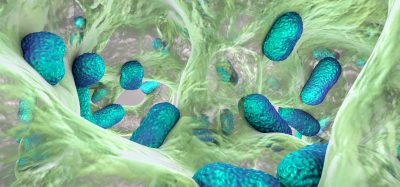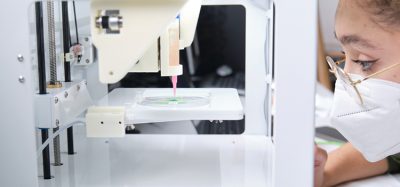Academic drug discovery in neurodegeneration; a new approach to an ageing problem
Posted: 10 June 2015 | Dr Eric Karran (Director of Research: Alzheimer’s Research UK)
Dementia is a global crisis with 76 million people worldwide expected to be living with the condition by 2030. Current symptomatic treatments provide modest improvements in cognition but disease-modifying therapies for diseases like Alzheimer’s – the most common cause of dementia – do not yet exist.
Despite global health leaders at the G8 Dementia Summit in 2013 outlining an ambition for a ‘disease-modifying treatment for dementia by 2025’, the failure rate of clinical trials for Alzheimer’s disease over the last decade has been close to 100%1. Focused investment in robust target validation and early-stage drug discovery is vital to ensure a greater range of potential therapeutic approaches for neurodegenerative disease.
Parallel approaches for developing new medicines are necessary2 and it is increasingly apparent that the traditional model of pharmaceutical-driven discovery cannot be the only facet to the drug pipeline. Between 2009 and 2014, the number of central nervous system programmes at 11 large pharmaceutical companies halved3. This withdrawal can, in part, be attributed to the high risk of investment in neurodegenerative research; the neuroscience research pipeline being particularly expensive and hard to fill, clinical trials lasting longer than average compared to other therapeutic areas and lengthy review times from regulatory agencies3. Increasingly, ‘big pharma’ are turning to the broad research base of academia for novel targets, capitalising on their innovation and flexibility. But academic drug discovery itself – from target validation through to lead optimisation and delivery of a compound for clinical testing – could form a parallel arm in the hunt for new treatments.
The field of academic drug discovery already contributes to the creation of new therapeutics, with 17% of drugs approved by the European Medicines Authority between 2010 and 2012 being traced back to academic funding bodies or public-private partnerships4. We are starting to see tangible successes in the field of oncology; the first effective treatment for advanced prostate cancer, abiraterone (Zytiga®), was discovered at the publically funded Institute of Cancer Research, London and three more therapeutic agents are on the market due to work at Cancer Research UK-funded drug discovery units. It is clear that a coordinated drug discovery effort housed in an academic institution can provide fully optimised compounds to take through to the clinic. People frequently draw parallels between cancer and dementia, the latter facing the stigma that has almost been erased for cancer over the last 25 years. Survival rates for cancer have doubled in recent years, a testament to the investment, infrastructure and drug discovery work that has been focused on this disease. We are learning lessons from this success and know that with the right strategy and investment, we can make the same strides in dementia.
Alzheimer’s Research UK has recently launched a £30 million Drug Discovery Alliance – a network of Drug Discovery Institutes based at the University of Cambridge, University of Oxford and University College London. The three Alzheimer’s Research UK Drug Discovery Institutes will build on the approach and success of similar initiatives in other therapeutic areas, and augment the current drug pipeline for Alzheimer’s and other neurodegenerative diseases that cause dementia. These academic institutions all have a proven scientific track record and extensive internal and external networks, factors known to correlate with success in an analysis of drug discovery companies5. This is a unique initiative in the UK dementia research community, and indeed one of only a handful of such enterprises in the world. The aim of the Alzheimer’s Research UK Drug Discovery Alliance is to channel innovative science towards new medicines as quickly as possible, to provide new effective treatments for people with dementia. Alongside the Academic Lead, the Chief Scientific Officer for each Drug Discovery Institute (DDI) will head a team of about 30 researchers across biology and chemistry disciplines. Each DDI will pursue novel targets from the academic community at the host institution and beyond, and will work together as an Alliance to coordinate key priorities for translation.
Dementia awareness has never been greater and it is vital that we build upon political and societal momentum to invest in research. Further research will find solutions for this global medical challenge, but it will not be done without a strategic push to translate basic biology into tangible patient benefit. I believe that academic drug discovery represents a huge step forward for the dementia research community and for the 44 million people worldwide living with the condition.
References
- Cummings, J.L., Morstorf, T. and Zhong, K. Alzheimer’s disease drug-development pipeline: few candidates, frequent failures. Alzheimer’s research & Therapy 2014, 6:37
- Lo, A.W., Ho, C., Cummings, J and Kosik, K.S. Parallel discovery of Alzheimer’s therapeutics. Sci. Transl Med 2014, 6:241
- Choi, D.W., Armitage, R., Brady, L.S., Coetzee, T., Fisher, W., Hyman, S., Pande, A., Paul, S, Potter, W.I., Roin, B. and Sherer, T. Medicines for the Mind: Policy-based ‘pull’ incentives for creating breakthrough CNS drugs. Neuron 2014 84:3
- Lincker H., Ziogas, C., Carr, M., Porta, N and Eichler, H.G. Regulatory watch: Where do new medicines originate from in the EU? Nat Rev Drug Discov 2014 13:2
- Ringel, M., Tollman, P., Hersch, G and Schulze, U. Does size matter in R&D productivity? If not, what does? Rev. Drug Discov. 2013 12: 901-902
Related topics
Drug Discovery, Gene Testing
Related conditions
Alzheimer’s disease, Dementia
Related organisations
Alzheimer’s Research UK
Related people
Dr Eric Karran







